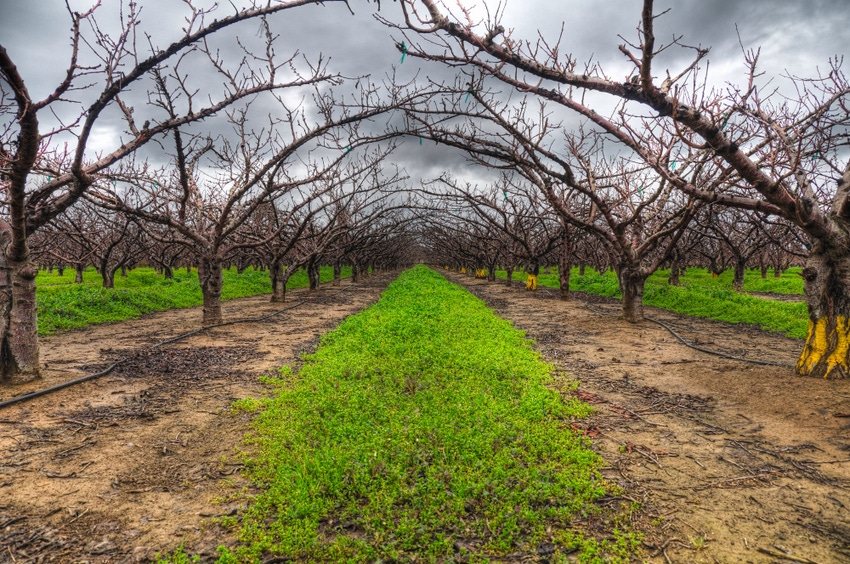
While another robust and deadly season of wildfires combined with power blackouts remain a hot topic this month, we start this update with some commonsense notes on post-harvest activities.
In a nutshell (pardon the pun), post-harvest is a good time to restore soil moisture levels in the orchard, critical for next year’s budding process and overall crop development. It’s also the right time to add soil amendments including gypsum or lime, and especially potassium.
As you consider fertilizers and soil nutrients this post-harvest season, Katherine Jarvis-Shean, a University of California Cooperative Extension orchard systems advisor in Yolo County, reminds growers of the importance of potassium in orchards.
According to a recent article co-authored by Joseph Connell, UCCE Farm Advisor Emeritus, Butte County and Patrick H. Brown, University of California, Davis, Professor of Plant Sciences, potassium is critical and plays a major role in sustained yields.
“Potassium (K) is important for helping plants move and store energy, regulate water loss, grow, flower and fruit. Almonds are particularly K hungry crops. UC Davis and UCCE research found that inadequate potassium decreased yields by increasing spur death and the percent of spurs that had flowers, and thus set nuts,” the report notes.
The heavier nut load in the current year could well mean the need for additional potassium in the coming season. Get the full rundown and the complete report here.
Cleanup in the orchard
Post-harvest is also a good time to address cleaning up the orchard floor, including scraping if necessary, after the toll of heavy traffic of recent weeks. It is also the right time for some necessary pruning, but keep in mind that cutting and shredding should be done with care because it can quickly add to the dangers of increasing fuel for wildfires.
And speaking of fire
Another season of robust and deadly wildfires has returned, spawned by excessive winds and dry conditions from the south end of the Golden State almost as far north as the Oregon State Line.
As of this writing no less than 15 active fires were burning across the state, including the Kincade Fire in Sonoma County and the Saddle Ridge and Tick Fires in Los Angeles County. So far this year the California Department of Forestry and Fire Protection is reporting well over 163,000 acres have burned in at least 5,800 fire incidents resulting in several fatalities and the destruction of over 400 structures.
In retrospect, the season has not approached the record fire seasons of 2018 and 2017 yet, which claimed more than 100 lives and destroyed thousands of homes. But the CDFF warns conditions are ripe for more fire incidents fueled by extreme high winds, dry conditions and the unprecedented buildup of dry vegetation.
Regardless whether your farm or orchard are in harm’s way from wildfire incidents, outdoor workers are reminded of the dangers of smoke.
You can find the latest fire information online at the University of California Extension Fire site online and at the California Department of Forestry and Fire Protection site online.
Power problems in the Golden State
By now chances are more than good that you are aware of the California power blackouts and hopefully you have made adjustments at your farm, orchard and private property to minimize the negative effects of living and working without power.
So far power outages have been impeding crop harvesting and watering schedules and forced evacuations of livestock and farm families. Bloomberg has reported “threatened parts of the agriculture” in the state including tree nut, fruit and wine operations.
The blackouts are still being enforced at the time this article was submitted and the inconvenience they have caused has been problematic for many farmers, including tree nut growers, many of which have been using generators to maintain farm operations.
Officials at Pacific Gas & Electric announced earlier this month they would begin shutting off power across Northern California in an effort to avoid additional wildfires resulting from wind damaged equipment. Hundreds of thousands of customers were affected by the early blackouts and that number continued to grow until last week. As of this writing some 2.5 million PG &E customers have been without power. Late on Oct. 29 the utility issued a statement calling a break in the blackouts, by later that night those activities were resumed.
Hardest hit by blackouts and fires have been Sonoma County where over 200,000 residents were forced to evacuate. Also heavy hit have been residents and businesses of Butte County.
Farmers were not immune to power blackouts
The blackouts were particularly hard on small farmers as most rely on water wells powered by electric pumps. When the power stops flowing, so does the water. Vegetable farmers depend heavily on cold storage of their goods before delivering to market. No power, no refrigeration. Dairy and livestock producers also depend on a steady flow of water and electricity.
A word about November weather
Now that November has arrived and fall weather is slowly settling in across large parts of the Golden State, tree nut growers are reminded that while daytime highs can still reach into the 80s, the mercury can quickly drop at night under the right circumstances. It happened last year when daytime and nighttime temps dropped as much as 50 or more degrees in a few areas, to climb once again the following day to unseasonably warm levels.
Such incidents can result in damage to root systems under the right circumstance. While researchers continue to examine the issue, they warn of exaggerated temperature swings between daytime highs and nighttime lows which can be damaging to trees. No need to call in the helicopters, but careful monitoring of temperature swings is important. Stay on guard!
For more news on tree nuts as reported by growers and farm advisors, subscribe to the Tree Nut Farm Press e-newsletter.
About the Author(s)
You May Also Like






